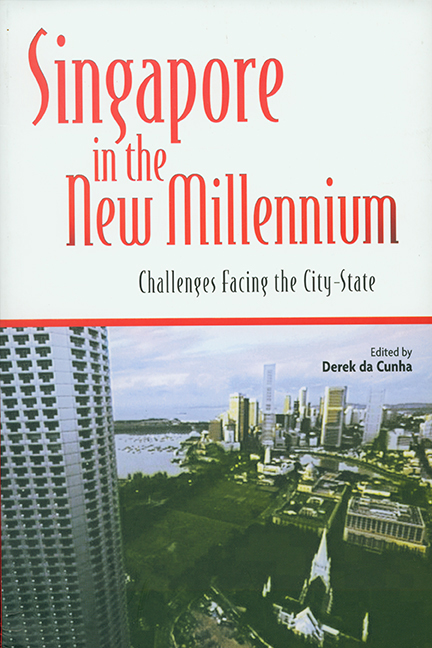Book contents
- Frontmatter
- Contents
- Preface
- Contributors
- 1 The Limits of a City-state: Or Are There?
- 2 External Challenges Facing the Economy
- 3 Governance: Its Complexity and Evolution
- 4 The Future of Civil Society: What Next?
- 5 Relating to the World: Images, Metaphors, and Analogies
- 6 Relating to the World: Images, Metaphors, and Analogies
- 7 Education in the Early 21st Century: Challenges and Dilemmas
- 8 Reframing Modernity: The Challenge of Remaking Singapore
- 9 National Identity, the Arts, and the Global City
- 10 The Media and the Flow of Information
- 11 Conclusion
- Index
6 - Relating to the World: Images, Metaphors, and Analogies
Published online by Cambridge University Press: 21 October 2015
- Frontmatter
- Contents
- Preface
- Contributors
- 1 The Limits of a City-state: Or Are There?
- 2 External Challenges Facing the Economy
- 3 Governance: Its Complexity and Evolution
- 4 The Future of Civil Society: What Next?
- 5 Relating to the World: Images, Metaphors, and Analogies
- 6 Relating to the World: Images, Metaphors, and Analogies
- 7 Education in the Early 21st Century: Challenges and Dilemmas
- 8 Reframing Modernity: The Challenge of Remaking Singapore
- 9 National Identity, the Arts, and the Global City
- 10 The Media and the Flow of Information
- 11 Conclusion
- Index
Summary
Introduction
A small country has a natural and inherent sense of insecurity, as the historical record of nation-states in both the modern and classical worlds has attested. And so it has similarly proven to be the case with the state of Singapore since it was expelled from the Federation of Malaysia on 9 August 1965. Since that time, against all odds, Singapore has succeeded in not just surviving but prospering in Southeast Asia — a region with a myriad of geopolitical cleavages that have not infrequently erupted into conflict of one form or another, both intra-state and inter-state. How has Singapore survived and prospered within that environment and despite an acute sense of insecurity and vulnerability, is one of the questions this chapter will address. How Singapore will continue to survive and prosper in the new millennium, as its threat perceptions evolve and changes occur in the Southeast Asian geopolitical environment, is another question that will be addressed.
Singapore's security can be examined at three systemic levels. The first of these levels is the domestic, in terms of general regime and state (or internal) security. The second is the external level, in terms of threats to national security emanating from the external environment. And the third and final level is that of the region, in terms of the region's (or ASEAN's) security being indivisible from that of Singapore's. In the current absence of identifiable threats to internal security (which were pervasive in the past — especially the 1960s — but are now no longer apparent), this chapter will examine the second and third levels of security. It will also ascertain how Singapore's threat perceptions will likely evolve in the first two decades of the new millennium. But before all that, it is important to set out the sources of Singapore's sense of insecurity and how the city-state has attempted to minimize that insecurity.
Sources of Singapore's Sense of Insecurity
The sources of Singapore's sense of insecurity derive from two separate categories that are related. One category constitutes structural sources of insecurity; they are sources that are ingrained in the body-politic and physical nature of the nation-state.
- Type
- Chapter
- Information
- Singapore in the New MillenniumChallenges Facing the City-State, pp. 133 - 153Publisher: ISEAS–Yusof Ishak InstitutePrint publication year: 2002

